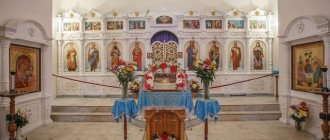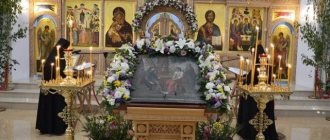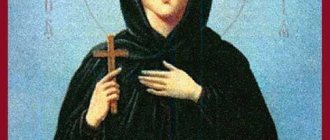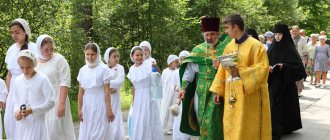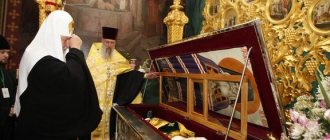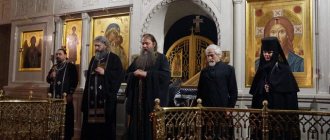Mir
Belarus Minsk region village of Baran St. Xenia Convent (Baran) Map is loading…
{"format":"leaflet","minzoom":false,"maxzoom":false,"limit":50,"offset":0,"link":"all","sort":[""], "order":[],"headers":"show","mainlabel":"","intro":"","outro":"","searchlabel":"\u2026 \u0441\u043b\u0435\ u0434\u0443\u044e\u0449\u0438\u0435 \u0440\u0435\u0437\u0443\u043b\u044c\u0442\u0430\u0442\u044b","default":"","import-annotation":false,"width ":"auto","height":"350px","centre":{"text":"","title":"""link":"""lat":54.49147500000000121644916362129151821136474609375,"lon": 28.6692919999999986657712724991142749786376953125,"icon":""},"title":"","label":"","icon":"","lines":[],"polygons":[],"circles":[ ],"rectangles":[],"copycoords":false,"static":false,"zoom":8,"defzoom":14,"layers":["OpenStreetMap"],"image layers":[] ,"overlays":[],"resizable":false,"fullscreen":true,"scrollwheelzoom":true,"cluster":false,"clustermaxzoom":9,"clusterzoomonclick":true,"clustermaxradius":80, "clusterspiderfy":true,"geojson":"","clicktarget":"","showtitle":true,"hidenamespace":false,"template":"","userparam":"","activeicon": "","pagelabel":false,"ajaxcoordproperty":"","ajaxquery":"","locations":[{"text":"\u003Cb\u003E\u003Ca href=\"/palomnik/%D0% A1%D0%B2%D1%8F%D1%82%D0%BE-%D0%9A%D1%81%D0%B5%D0%BD%D0%B8%D0%B5%D0%B2%D1%81 %D0%BA%D0%B8%D0%B9_%D0%B6%D0%B5%D0%BD%D1%81%D0%BA%D0%B8%D0%B9_%D0%BC%D0%BE%D0 %BD%D0%B0%D1%81%D1%82%D1%8B%D1%80%D1%8C_(%D0%91%D0%B0%D1%80%D0%B0%D0%BD%D1% 8C)\» title=\»\u0421\u0432\u044f\u0442\u043e-\u041a\u0441\u0435\u043d\u0438\u0435\u0432\u0441\u043a\u0438\u0439 \u0436\u0435\u04 3d\u0441\ u043a\u0438\u0439 \u043c\u043e\u043d\u0430\u0441\u0442\u044b\u0440\u044c (\u0411\u0430\u0440\u0430\u043d\u044c)\»\u003E\u0421 \u0432\u044f\u0442\ u043e-\u041a\u0441\u0435\u043d\u0438\u0435\u0432\u0441\u043a\u0438\u0439 \u0436\u0435\u043d\u0441\u043a\u0438\u0439\u043c\u 043e\u043d\u0430\u0441\u0442 \u044b\u0440\u044c (\u0411\u0430\u0440\u0430\u043d\u044c)\u003C/a\u003E\u003C/b\u003E\u003Chr /\u003E\u003Ca href=\"/palomnik/%D0%A1 %D0%B2%D0%BE%D0%B9%D1%81%D1%82%D0%B2%D0%BE:%D0%90%D0%BD%D0%BD%D0%BE%D1%82% D0%B0%D1%86%D0%B8%D1%8F\" title=\"\u0421\u0432\u043e\u0439\u0441\u0442\u0432\u043e:\u0410\u043d\u043d\u043e\u0442\u0430 \u0446\u0438\u044f\»\u003E\u0410\u043d\u043d\u043e\u0442\u0430\u0446\u0438\u044f\u003C/a\u003E: \u0441\u0442\u0430\u043b \u 043f\u0435\u0440\ u0432\u044b\u043c \u0432 \u043c\u0438\u0440\u0435 \u043c\u043e\u043d\u0430\u0441\u0442\u044b\u0440\u0435\u043c, \u043d\u0430 \u0437\u0432\u0430\u043d\u043d \u044b\u043c \u0432 \u0447\u0435\u0441\u0442\u044c \u0441\u0432\u044f\u0442\u043e\u0439 \u0431\u043b\u0430\u0436\u0435\u043 d\u043d\u043e\u0439\u041a\u0441 \u0435\u043d\u0438\u0438 \u041f\u0435\u0442\u0435\u0440\u0431\u0443\u0440\u0433\u0441\u043a\u043e\u0439. \u041e\u0431\u0438\u0442\u0435\u043b\u044c \u043e\u0441\u043d\u043e\u0432\u0430\u043d\u0430 \u0432 2002 \u0433\u043e\u0434\ u0443\u0438\u0440\u0430\u0441\ u043f\u043e\u043b\u043e\u0436\u0435\u043d\u0430 \u0432 \u0434\u0435\u0440\u0435\u0432\u043d\u0435 \u0411\u0430\u0440\u0430\u 043d\u044c\u0411\u043e\u0440\ u0438\u0441\u043e\u0432\u0441\u043a\u043e\u0433\u043e \u0440\u0430\u0439\u043e\u043d\u0430 \u041c\u0438\u043d\u0441\u043a\u0 43e\u0439\u043e\u0431\u043b\ u0430\u0441\u0442\u0438","title":"\u0421\u0432\u044f\u0442\u043e-\u041a\u0441\u0435\u043d\u0438\u0435\u0432\u0441\u043a\u0438\u04 39\u0436\ u0435\u043d\u0441\u043a\u0438\u0439 \u043c\u043e\u043d\u0430\u0441\u0442\u044b\u0440\u044c (\u0411\u0430\u0440\u0430\u043d\u0 44c)","link":" ","lat":54.49147500000000121644916362129151821136474609375,"lon":28.6692919999999986657712724991142749786376953125,"icon":""}],"imageLa yers":[]}
54.491475; 28.669292
Belarus, Minsk region, Borisov district, Moiseevshchinsky village council, Baran village, Shkolnaya street
Baran village, Minsk region
Belarus
Telephone:
8-0177-72-86-42
Holy Xenia Convent
became the first monastery in the world named in honor of St. Blessed Xenia of St. Petersburg. The monastery was founded in 2002 and is located in the village of Baran, Borisov district, Minsk region.
History[[edit]h2>
In August 2002, by decision of the Synod of the Belarusian Exarchate of the Russian Orthodox Church, a convent was established in honor of St. Blessed Xenia of Petersburg in the village of Baran, Borisov district. This monastery became the first monastery in the world dedicated to everyone’s beloved blessed Xenia.
The location of the monastery is very picturesque - forest, hilly fields, small streams running among these fields, a lake. The monastery, like the ancient ones, stands on a hill at the beginning of a large forest area. The entire land here has already been consecrated by the pious life of our ancestors. The monastery grows on the site of an ancient cemetery chapel in honor of St. the prophet of God Elijah. In the village courtyard (in the village itself), five hundred meters from the monastery fence, there was once an ancient church in honor of the Intercession of the Most Holy Theotokos, which was returned to the fold of the Orthodox Church in 1837, after being captured by the Uniates at the turn of the 17th and 18th centuries. During the atheistic times, the temple was destroyed, but within its foundations a small church has already been restored. Divine services are held there and the Patronal Feast of the Intercession of the Virgin Mary is honored. Right on the site of the ancient church cemetery, on the hillock where the former church stood, a large wooden church is now being built in honor of the Intercession of the Virgin Mary, made of thick logs and with a hip roof, in the style of northern Russian temple architecture.
Over the past years, stone churches have already been built on the territory of the monastery itself: in honor of St. Blessed Xenia of Petersburg, as the main church of the monastery, the lower aisle is a small crypt church in honor of St. Seraphim of Sarov. On the basis of an ancient cemetery chapel, a small but surprisingly harmonious church was erected in honor of St. Vmch. St. George the Victorious. The architecture of the temple speculatively presents us with the image of ancient Holy Rus', this is a warlike temple-fortress, and harmonious plasticity of lines and shapes, and a richly decorated interior with wonderful icons and a stone iconostasis. The temple reveals the image of a person in his Divine plan, a Christian - simple, pure, harmoniously restrained and ascetic on the outside, but with a rich inner world and indescribable beauty inside. Thus, the awareness of this, expressed in the architecture of the St. George’s Church, also encourages us to lead a Christian lifestyle, reminding us of the images of the militant Church, holiness, purity and the fact that “the Kingdom of God is within you” (Luke 17:21).
With God's help, a building for monastics with a large refectory for the nuns of the monastery and guests was built on the territory of the monastery. The monastery also has a subsidiary farm, where cows, sheep, chickens and an apiary are kept. On the farmstead, vegetables are grown in large greenhouses. Wheat collected from the monastery fields is used to bake liturgical prosphoras and bread. The bread is baked according to ancient recipes using sourdough with the addition of honey from our own apiary. Between the village courtyard and the monastery itself, near the road, there is a spring in honor of the angel of the monastery - Blessed Xenia. The source is equipped with a covered font, convenient access to the streams of water and is marked with a large cross. A wooden chapel is being built next to the source in honor of St. Prophet Forerunner and Baptist of the Lord John. The symbolic design of this chapel and its location next to the source expresses the constant intercession of St. John before the Lord for all those who come here and wash themselves in the life-giving waters with faith, prayer and reverence, and the very immersion in the waters of the source symbolizes the renewal of our baptism preached by the Prophet.
Over the past years, many pieces of holy relics have appeared in the monastery: saints, saints, martyrs, righteous men and women who honored the monastery with their mystical presence. We can say that the further construction of the monastery is carried out on the relics of the saints and their prayers, strengthening all those who work and flow to the monastery. There is also a miraculous icon of St. bl. Ksenia of Petersburg, who was found during a fire that occurred in the monastery in 2007. The oak boards burned, the icon case was charred, but the small icon of Blessed Xenia itself was not damaged at all... In the altar of the Xenia Church there is a shrine of universal significance - a particle of the Life-giving Cross of the Lord. Her presence is consistent with the words of the akathist in honor of Blessed Xenia, which speaks of the saint’s help in choosing her own cross for our salvation. There are also a number of other shrines that help to strengthen ourselves spiritually and physically in our troubled, bustling world.
During the existence of the monastery, only one abbess changed in it. The first abbess, Mother Thomaida, cared for the sisters from the first days of the founding of the monastery for two years. During the time of Abbess Thomaida, two altars were consecrated - in honor of St. Blessed Xenia of St. Petersburg and St. Seraphim of Sarov. Water heating was installed in them. Since 2004, a nun from the St. Elisabeth Convent, Mother Vasilissa, was appointed abbess of the monastery, who enthusiastically took up the construction and arrangement of the new monastery.
In addition to the building with the refectory, churches in honor of St. Blessed Xenia, in honor of St. Vmch. George the Victorious, the interior decoration of the temple in honor of St. Seraphim of Sarov. The local club has been converted into a refectory for fans, as they used to call foot wanderers and, in general, all Christians who came to venerate shrines and pray at the monastery. Extensive greenhouses were built for growing vegetables, a large bee apiary and a barnyard were established. A hotel is being built, a courtyard of this monastery is being built in the city of Borisov, a wooden church is being built in the village courtyard in honor of the Intercession of the Blessed Virgin Mary, a chapel in honor of John the Baptist at the source is being completed. Projects are being developed for a large temple in honor of the Prophet Elijah of God, an Orthodox cultural center, which will be assigned to the monastery and will be located near it... A lot has already been done, it’s impossible to count everything that, through the prayers of the blessed one. Ksenia was given the opportunity to organize her monastery. And the upcoming spiritual works and visible creation will last for many more years. God's mercy rests over the holy monastery, which is built with the Lord's blessing, as He Himself said, “...without Me you can do nothing” (John 15:5).
Prayer of Blessed Xenia of Petersburg
O holy all-blessed mother Ksenia! You who lived under the shelter of the Most High, led and strengthened by the Mother of God, endured hunger and thirst, cold and heat, reproach and persecution, received the gift of clairvoyance and miracles from God and rested under the shadow of the Almighty. Now the Holy Church, like a fragrant flower, glorifies you. Standing at the place of your burial, before your holy image, as if you were alive and present with us, we pray to you: accept our petitions and bring them to the Throne of the Merciful Heavenly Father, as you have boldness towards Him. Ask those who flow to you for eternal salvation, for our good deeds and undertakings to receive a generous blessing, and for deliverance from all troubles and sorrows. Stand before our All-Merciful Savior with your holy prayers for us, unworthy and sinners. Help, holy blessed mother Xenia, to illuminate the infants with the light of holy baptism and to seal them with the seal of the gift of the Holy Spirit, to educate boys and girls in faith, honesty, fear of God and grant them success in learning; heal the sick and ailing, send down love and harmony to families; Honor those who are monastics to fight a good fight and protect them from reproach, strengthen the shepherds in the strength of the Holy Spirit, preserve our people and country in peace and tranquility, pray for those deprived of communion of the Holy Mysteries of Christ in the dying hour. You are our hope and hope, quick hearing and deliverance, we send thanks to you and with you we glorify the Father, and the Son, and the Holy Spirit, now and ever and unto the ages of ages. Amen.
Current state[[edit]h2>
Currently, there are about twenty nuns in the monastery, whose labors and prayers support quite a large household and, most importantly, the full circle of the liturgical cycle is performed every day. The incessant Psalter is read, akathists are served to the patron saints of the monastery, and the Divine Liturgy is celebrated every day. The monastery is cared for by three priests. Two priests serve ordinary services, and the third is obedient to the confessor of the monastery. With the arrival of Mother Vasilisa, a white sisterhood was founded at the monastery, where more than 25 sisters of mercy carry out their obediences.
Reverent pilgrims will find everything they need to strengthen their souls here. The monastery organizes Christmas and Easter holidays for children, and in the summer it hosts groups of schoolchildren in an Orthodox camp, located during the camp on the territory of the monastery. On holidays, especially on patronal feast days, the monastery receives many guests from low to high rank, who are equal before the Lord, and arranges common holiday meals to continue spiritual communication after the services.
Votive monastery. The Borisov Tikhvin Monastery is being revived in the Belgorod region.
Source: portal of the Orthodox newspaper “Blagovest”
Probably, my regular readers are already tired of the fact that almost every time I begin my next notes with yet another amazement: how, it turns out, our Belgorod region is closely connected by spiritual ties with Samara. But I myself never cease to be surprised and delighted by the ongoing series of unexpected discoveries.
The nuns of the Borisov Monastery marched in the Immortal Regiment through the territory of their monastery.
At the end of last summer, as an employee of the diocesan department for interaction with society and the media, I was called to an off-site meeting of the department at the Borisov Tikhvin Monastery. Borisovka is the regional center of the Belgorod region and the center of one of the deaneries of our Gubkin (as part of the Belgorod Metropolis) diocese. Of course, I knew that there was the first and so far only monastery of our young diocese, opened again, after many years of ruin and desolation, with the blessing and labors of our Bishop, Bishop of Gubkin and Grayvoron Sophrony. Of course, I have seen Mother Iova, the abbess of the monastery, more than once at various diocesan events. But before this forced trip, I had never been to the monastery itself. You can, of course, justify yourself by the lack of direct bus service, lack of time, or whatever. But here it is: for long-distance “forays”, with obligatory visits to holy places, I find the time, the means, and the strength, but I won’t run away anywhere, will I have time?
We are sitting in the Church of the Holy Great Martyr and Healer Panteleimon - it is very small, but the only one so far completely restored. Belgorod historians and “sovereign men” invited to this unusual meeting, on whom the restoration of the monastery largely depends, take turns speaking and telling a lot of interesting and important things. The invited journalists have turned on their voice recorders and are writing something in a notepad. But I still can’t concentrate, amazed by what I’ve already seen and heard, and most importantly, by the fact that I didn’t bother to visit here before.
In the eyes of the average person, what’s special about this Borisovka and the monastery ruins? How many of them there are now in Mother Rus' - restored, being restored, or still standing in the mournful queue (no matter how hard you try, the hands of the Church cannot cover everything at once). But despite all this apparent ordinariness, the Borisov Tikhvin Convent is unique. Because this is one of the few monasteries that are monuments to historical events (I know only one more in our country - the monastery on the Borodino Field).
The Borisov monastery is a votive monastery, that is, built according to a vow. And this vow was made by the closest associate of Emperor Peter I, Field Marshal Boris Petrovich Sheremetev, on the eve of the Battle of Poltava. Let me remind you: this was the general battle of the Northern War between the Russians and the Swedes, in which the troops of Peter the Great won a victory 310 years ago. July 10 (new style) is the Day of Military Glory of Russia - the day of the victory of the Russian army over the Swedes. The date of the battle fell on the day of remembrance of the Monk Sampson the Host, who has since been considered the Heavenly Patron of the Battle of Poltava. It was in honor of this event that the Sampsonievskaya Church near Poltava and the Sampsonievsky Cathedral in St. Petersburg were erected.
Yes, but what do Borisovka and the Tikhvin Monastery have to do with it?
But the fact is that Boris Petrovich Sheremetev owned the Borisovka estate, which then belonged to the Kursk province. Count Sheremetev was a very pious man who deeply respected the faith and traditions of his ancestors. Back in 1701, in gratitude for the Russian victory over the Swedes, on the spot where the camp church stood, he built a temple in honor of St. Peter of Moscow, which apparently became the first church of St. Petersburg under construction. Going to the Battle of Poltava, Boris Petrovich made a vow to build a monastery in honor of his beloved icon in case of victory, placing a small copper Tikhvin image on his chest before the battle.
Deciding in 1709 to give the Swedes a general battle, Peter I scheduled this battle for June 26 (old style). But it was on this day that a celebration took place in honor of the miraculous Tikhvin Icon! And the pious field marshal persuaded the Emperor to postpone the battle for one day in order to honor the holiday with a solemn Divine service and ask the Russian army for the protection and intercession of the Mother of God. Sheremetev's authority was such that the Tsar listened to his field marshal. A day later, commanding the center of the Russian army, Sheremetev distinguished himself with unparalleled courage: being under severe fire, he remained unharmed even when a bullet, piercing his armor, touched his shirt, which was visible from under his unbuttoned camisole. Tradition says that it was the Tikhvin icon on his chest that protected him from death.
Returning after the victory from near Poltava, Peter I stopped by his comrade-in-arms and friend at the Borisovka estate and stayed there for six weeks. It was here that Sheremetev told the Emperor his heartfelt desire to build a women’s monastery. They say that Emperor Peter I himself chose the location for the future monastery. Surveying the surroundings, he drew attention to the mountain above the Vorskla River, ordered the production of a large wooden cross and personally erected it on the top, thereby designating a place for the construction of the future Transfiguration Church. The main church, already by the will of Count Sheremetev, was built in honor of the Tikhvin Icon of the Mother of God, and the monastery received the name Bogoroditsko-Tikhvinsky. The field marshal presented the “standard-bearing” Tikhvin icon to the monastery, the same one that accompanied him in the Battle of Poltava. By 1713, a church, a bell tower, cellars, and “svetlitsa” were built for the nuns, and monastery gardens with apple, pear, and plum trees were laid out.
But the most unusual thing happened in 1714. On January 1, the monastery’s charter, drawn up by Sheremetev himself, was approved. It was called “Testament or Article on How to Maintain a Newly Built Monastery.” A rare case in history: the charter of the monastery is drawn up not by a monk, not an ascetic elder, not a metropolitan, but by a commander, field marshal, diplomat, and the Emperor’s closest assistant. But the compiler of the charter had to know in every detail the daily life and needs of the nuns, so that the rules would help and not hinder the main goal of monastic life - prayer, inner silence.
According to this “Testament”, on the farm there was a best man (that is, a caretaker), and a “collar”, and a water carrier, and a shepherd... Every year, Sheremetev allocated a monetary salary for the needs of the nuns: 2 rubles per year each (by the way, a huge pork carcass cost then 50 kopecks, a ram - 24 kopecks). At the same time, it was forbidden to store and prepare food in cells, but at the common meal there was fish, cheese, and even beer on the table, which Sheremetev ordered “to be given in portions.” On fasting days, the food offered was the simplest - porridge and cabbage soup.
The monastery did not have any monastic land - it was entirely supported by the money of the Sheremetev family.
Count Boris Petrovich Sheremetev sent the painter Ignatiev from St. Petersburg to Borisovka, and then other artists to paint icons in the monastery churches being built and to teach nuns and local residents the basics of icon painting. This business took root and became so strong in Borisovka that already at the beginning of the 19th century the whole country knew about Borisov’s icons. The sisters were engaged in icon painting, tablet painting, icon case painting, gilding and “icon-making” crafts, that is, they decorated icons with gold and silver foil. By the beginning of the 20th century, 442 people painted icons in Borisovka. And in 1902, with the assistance of the Chairman of the Commission of Trusteeship of Russian Icon Painting, Count S.M. Sheremetev (descendant of the legendary field marshal) in Borisovka, the opening of the Educational Icon Painting Workshop took place, the four-year training in which was free.
Today the main shrine of the monastery is the Tikhvin Icon of the Mother of God. It was brought from Ryazan and, upon examination by experts, was recognized as an icon of Borisov’s writing. And in the newly rebuilt Church of St. Nicholas there is a rare bas-relief image of St. Nicholas (aka “Nicholas the Ratny” and “Nicholas of Zaraisky”) - this image was also brought from Ryazan.
In the second half of the 18th century, during the reign of Empress Catherine II, there was a reduction in the staff of monasteries, almost half of them were closed, and monks and nuns were “densified” in the remaining monasteries. The monastery in Borisovka was also subject to closure, but the Empress received a protest from the Sheremetev family - and the monastery was left alone.
Until the tragic events that began in February-October 1917, the Tikhvin Monastery was the spiritual and economic center of the Borisovka settlement, providing work for local residents. But in 1923, the monastery was closed - it seemed forever - the orphanage "New World named after Karl Liebknecht" was placed in cell buildings, the nuns were dispersed, and the churches were closed. Some of the old mothers found shelter in the homes of God-loving residents of Borisov (according to the recollections of residents, they made paper flowers to decorate icons and cemeteries), the younger ones went to the Kharkov region. And about a third of the sisters moved to the famous Belgorod Monastery Forest (some of the nuns from the dispersed monastery in Belgorod also went there). There, in the ravine, the nuns also had their own priest. The sisters of the two monasteries lived in this forest until the early 1930s. What follows is a story known as everywhere else in our long-suffering Fatherland at that time: arrests, exiles, those lucky enough to work (for how long?) as seamstresses or laborers, and then the same arrests, camps, exiles...
In the Mother of God-Tikhvin Monastery, despite the small number of its nuns (and all of them are already advanced in age), round-the-clock prayer is performed, priests serve daily Liturgies (on major holidays - two), daily reading of akathists and a canon for the seriously ill (commemoration is performed free of charge ).
The monastery, according to the firm conviction of Mother Superior, should be restored not just as a monastic monastery, but precisely as the only monastery-monument to the Poltava victory, and necessarily in connection with the memory of Count B.P. Sheremetev, in whose family there are eight monks and one schema-nun (they are recorded in the synod of the monastery for eternal remembrance on the Undying Psalter). And the field marshal himself almost became a monk: the will of Tsar Peter prevented him from realizing this desire... In the last years of his life, the field marshal, according to his daughter, helped many widows and orphans: “Poor families crowded around his chambers.” Receiving the largest salary in the country (over 7 thousand rubles) and owning 19 estates, he was distinguished by his love of poverty and piety. “The house of Count Sheremetev was a refuge for all the poor: at his table, on which no less than fifty cutlery was placed, everyone sat down - invited and uninvited, familiar and unfamiliar,” recalled a contemporary.
In his will, the field marshal wrote: “Take my sinful body and bury it in the Kiev Pechersk Monastery or wherever His Majesty’s will takes place.” But by order of the Tsar in 1719, Sheremetev was buried in the Alexander Nevsky Lavra in St. Petersburg. Over his grave by his grandson, N.P. Sheremetev, the Lazarevskaya Church was built, which became the tomb of the Sheremetev family.
| Abbess Job (Ivanova). |
Of course, that time I didn’t have a big conversation with Mother Job. But I managed to ask for blessings to write about what I saw and heard in Blagovest. Mother blessed and added:
— “Blagovest”? Samara? Yes, I receive and read this newspaper.
Having returned home, I decided to look for more information about the Borisov Monastery on the Internet. And I found a biographical certificate about its abbess, Abbess Job (Ivanova), which, among other things, says: “Received additional education - journalistic courses in Samara and until 2001 worked in various newspaper publications in Buzuluk, at the same time in several: as a correspondent , layout designer, photographer, proofreader, editor. In 2001, the Lord brought me to work at the Buzuluk Tikhvin Monastery, where she then served as obedient to publish a weekly monastic newspaper and was subsequently accepted as one of the sisters.”
Well, Mother Joba came to our diocese from Ryazan - together with several sister nuns and the current confessor of the monastery, Abbot Innocent (Artemkin), our Bishop Sophrony invited her to restore monastic life in Borisovka.
God works in mysterious ways. And for some reason, they always make paths for me from Samara to Belgorod... For a long, unforgivably long time I was planning to write this article, I kept thinking: just about now - I’ll find the time, break out to Borisovka again, wander around slowly with a camera, talk with the mothers ... Now here is this unfortunate virus, which has confused all the plans. But yesterday, looking through the chronicle of the civil holiday dearest to my heart, Victory Day, on social networks, grieving over the planned events disrupted by the same virus, I suddenly discovered a small note from the Borisov Monastery.
Our Immortal Regiment...
It will soon be six years since the ancient Tikhvin monastery has been restored here, on Belgorod soil. And every year on May 9, Victory Day, our sisters descended from Monastyrskaya Hill and joined the solemn procession of the Immortal Regiment through the streets of Borisovka. And this year, life in quarantine, has made its own adjustments...
But the sisters decided: there will be a march of the Immortal Regiment! And let it not be many thousands strong, let it only pass through the territory of the monastery - but a memorial service will be served for the deceased soldiers and prayers will be offered for all who gave their lives so that we can live in peace! For everyone for whom there is someone to pray, and for those for whom there is no one...
Low bow to you - Mother Job, Father Innocent, sisters and parishioners of the monastery. God bless you.
Marina Zakharchuk, p. New Ivnyansky district, Belgorod region.
The holiday of May 9 in the Borisov Tikhvin Monastery was celebrated with a prayer for all the fallen soldiers in the Great Patriotic War.
Description[[edit]h2>
Temple in honor of St. Blessed Xenia of St. Petersburg[[edit]h3>
Temple in honor of St. Blessed Xenia of St. Petersburg
In the 1990s, work began on the construction of the main church of the monastery - in honor of St. Blessed Xenia of St. Petersburg. It has two chapels: the upper one - in honor of the heavenly patroness of the monastery, St. Blessed Xenia of St. Petersburg (consecrated in 2003), the lower one - in honor of St. Seraphim of Sarov (consecrated in 2002). The temple standing on a hill looks like a snow-white ship against the background of the forest.
Temple in honor of the Holy Great Martyr George the Victorious[[edit]h3>
Next to the St. Xenia Church, on the site of the former wooden chapel in the name of the Prophet of God Elijah, a stone church was built in honor of the Holy Great Martyr George the Victorious (consecrated in 2003).
Temple of the Royal Passion-Bearers[[edit]h3>
Since November 2015, the Women's Monastery in honor of the Holy Blessed Xenia of St. Petersburg has a courtyard in the village of Yuzefovo - the Church of the Royal Passion-Bearers, in which the Divine Liturgy is celebrated weekly.
Holy spring of blessed Xenia[[edit]h3>
Not far from the temple there is a holy spring in the name of the heavenly patroness of the monastery. According to legend, the revered saint of the Belarusian land, the Venerable Euphrosyne of Polotsk, took water from a spring in honor of the Holy Blessed Xenia of St. Petersburg. Krinitsa is located on the road between the monastery churches and the monastery courtyard. In 2010, a chapel was founded at the spring in the name of the Holy Prophet, Forerunner and Baptist of the Lord John. Not far from the temple there is a holy spring in the name of the heavenly patroness of the monastery. According to legend, the revered saint of the Belarusian land, the Venerable Euphrosyne of Polotsk, took water from a spring in honor of the Holy Blessed Xenia of St. Petersburg. Krinitsa is located on the road between the monastery churches and the monastery courtyard. In 2010, a chapel was founded at the source in the name of the Holy Prophet, Forerunner and Baptist of the Lord John.
Compound[[edit]h3>
The monastery contains large agricultural lands. An orchard with 800 trees was established, more than 1,050 currant bushes were planted, and it also has its own bee apiary. The farm has sheep, chickens, ducks, and cows. If you wish, you can try fresh fish grown in the monastery pond. In the monastery greenhouses, red and ripe peppers flaunt.
Pilgrim[[edit]h2>
Regarding the organization of pilgrimage trips to the Convent in honor of St. Blessed Xenia of St. Petersburg, you can contact tel. +375-29-663-88-12 (Zakrevskaya Natalya Nikolaevna), email
To avoid confusion, you should immediately note that the village of Baranj is located 35 km away. to the northeast of the city of Borisov (about 120 km from Minsk) in the Minsk region, and not in the Vitebsk region, like the city of the same name.
From Minsk you can come to the monastery by train, minibus or bus (from the Moscow airport) to Borisov.
From the bus station in Borisov to the village of Baran by suburban buses:
Borisov-Mkherino - 7:20, 13:20, 17:20 - daily
Borisov-Selets - 6:10, 15:10 - daily, except Tuesday and Thursday
Borisov-Kopachevka - 6:30, 16:50 - daily, except Tuesday and Thursday
You also need to get your own transport from Minsk through the city of Borisov along the P53 highway, which replaces the M2 highway near the Mound of Glory. After Borisov (1-2 km) you need to turn left from P53 (direction Nemanitsa village). A more detailed map of the route can be found below.
Current schedule of services

